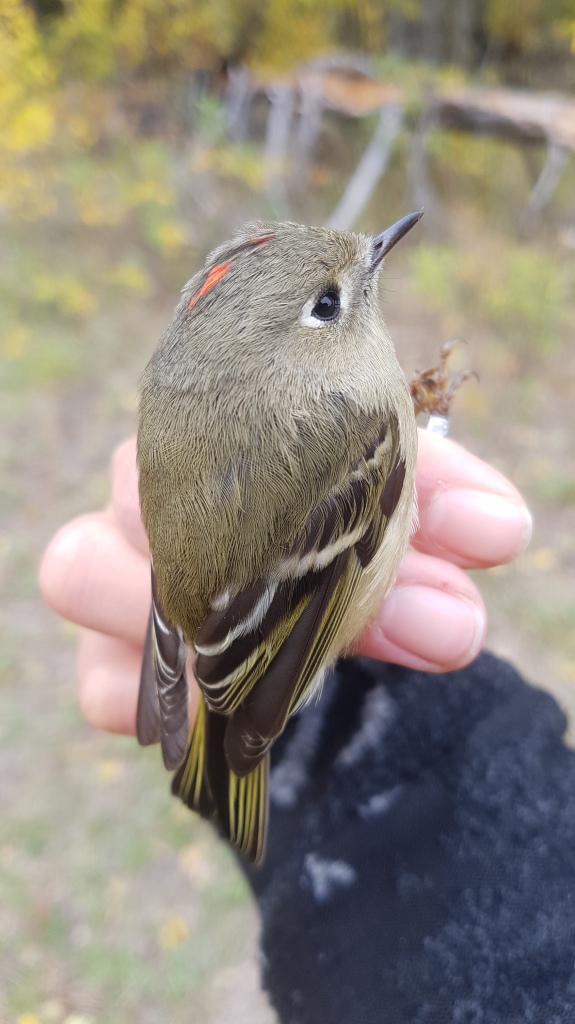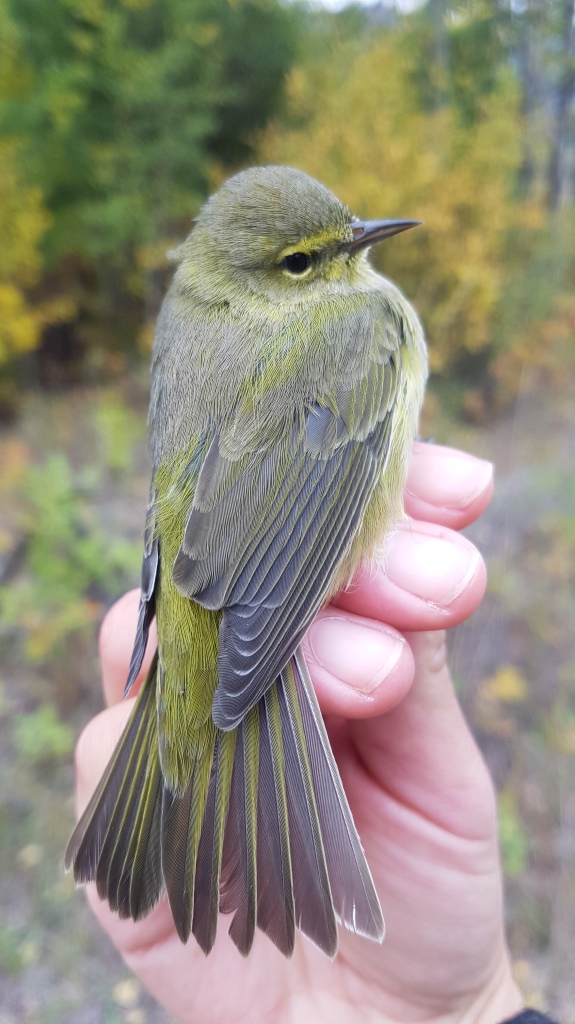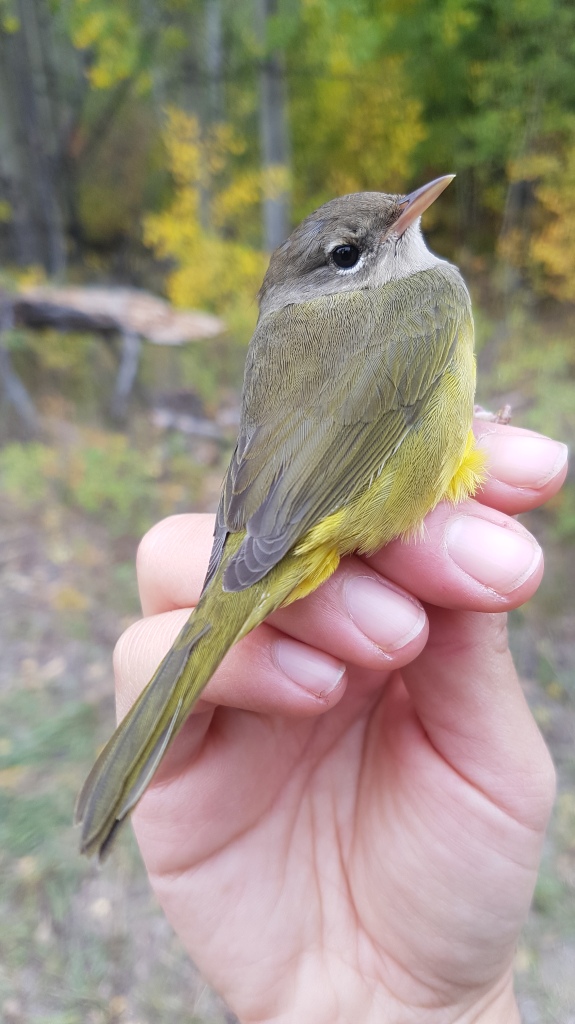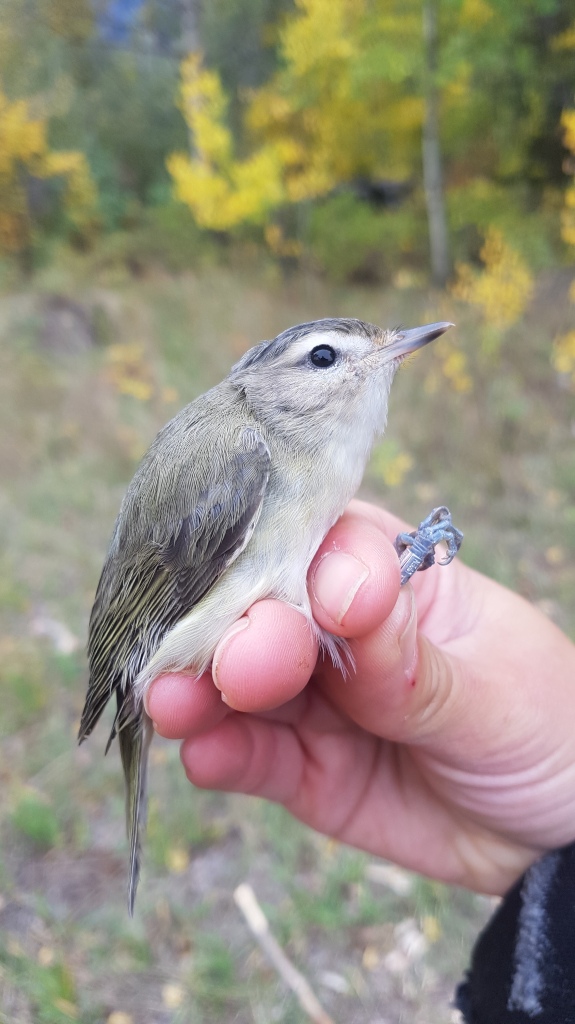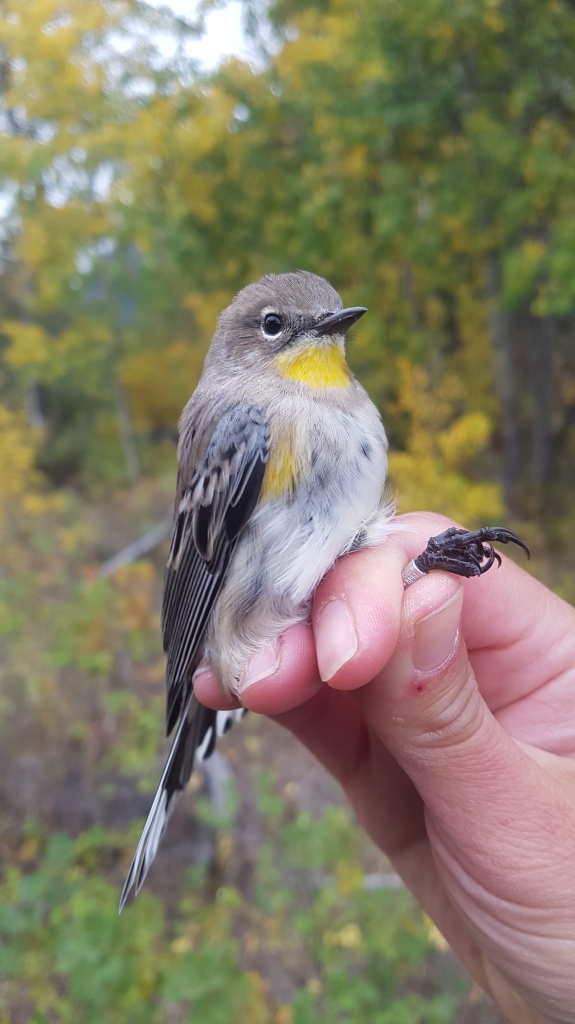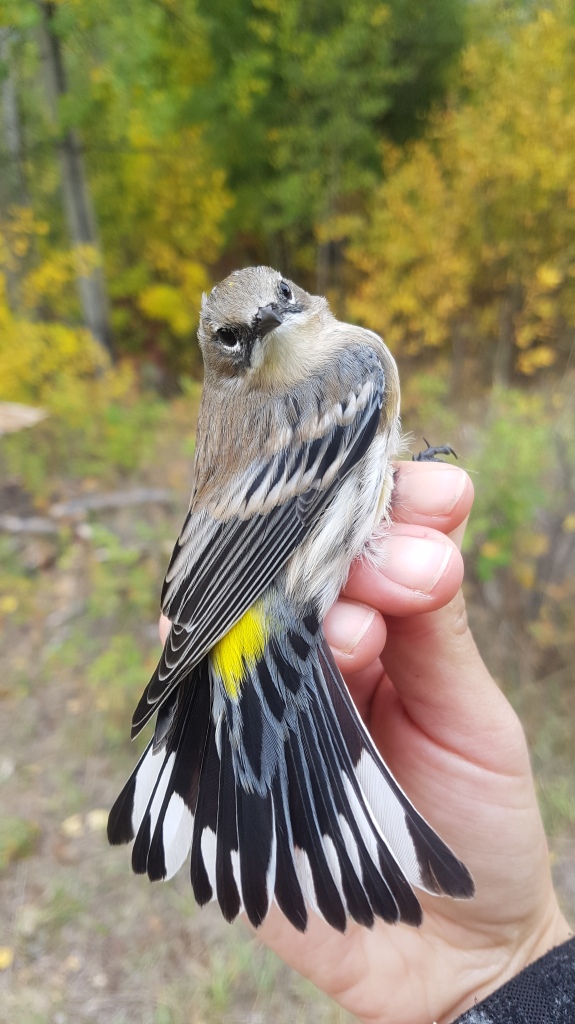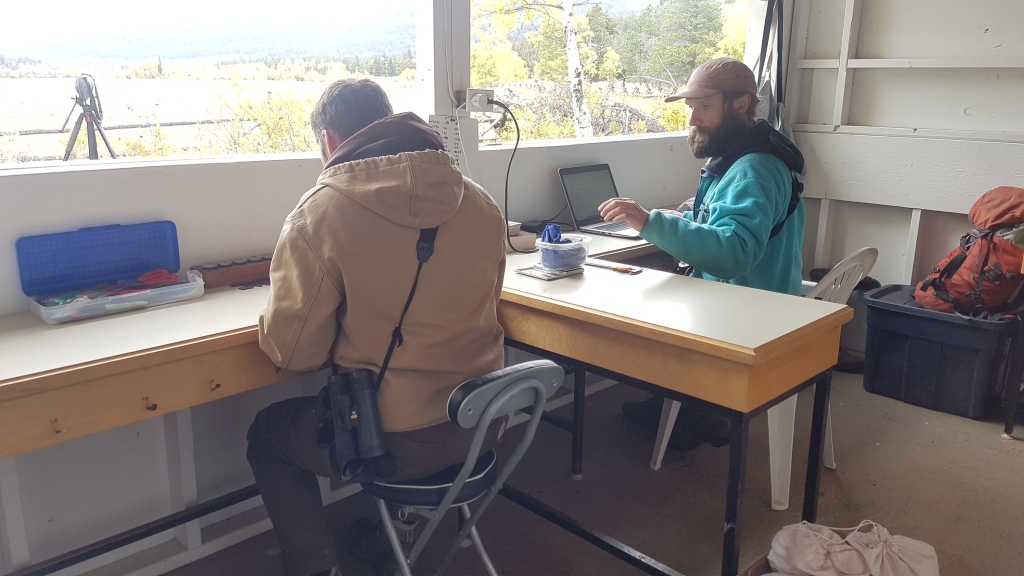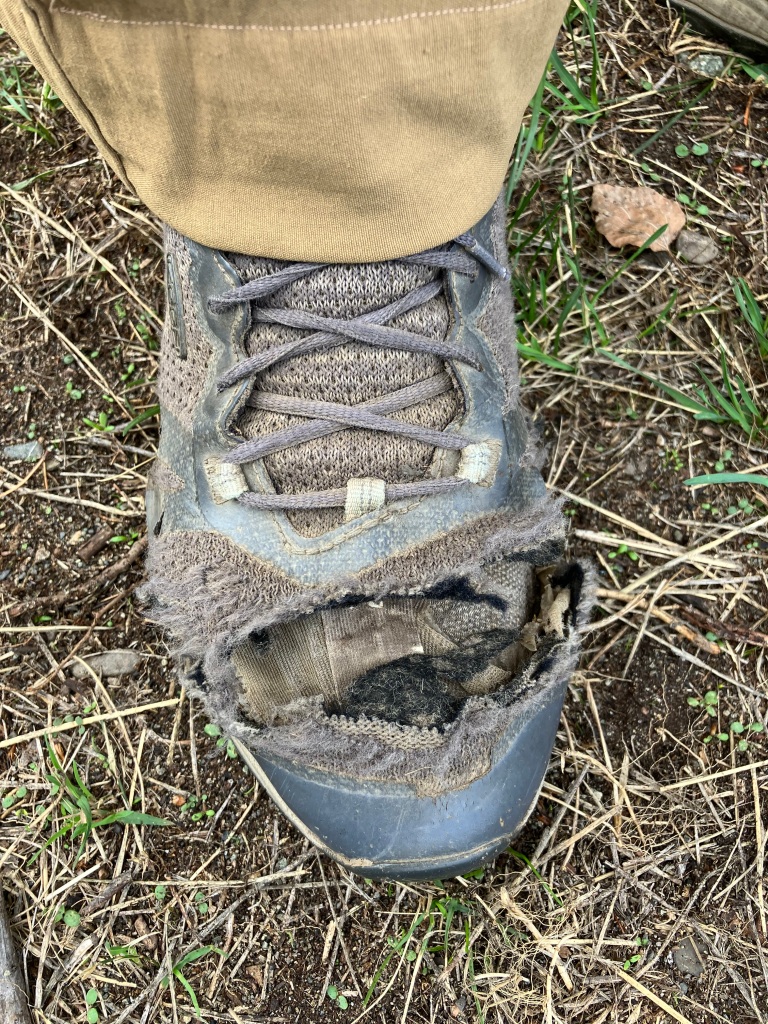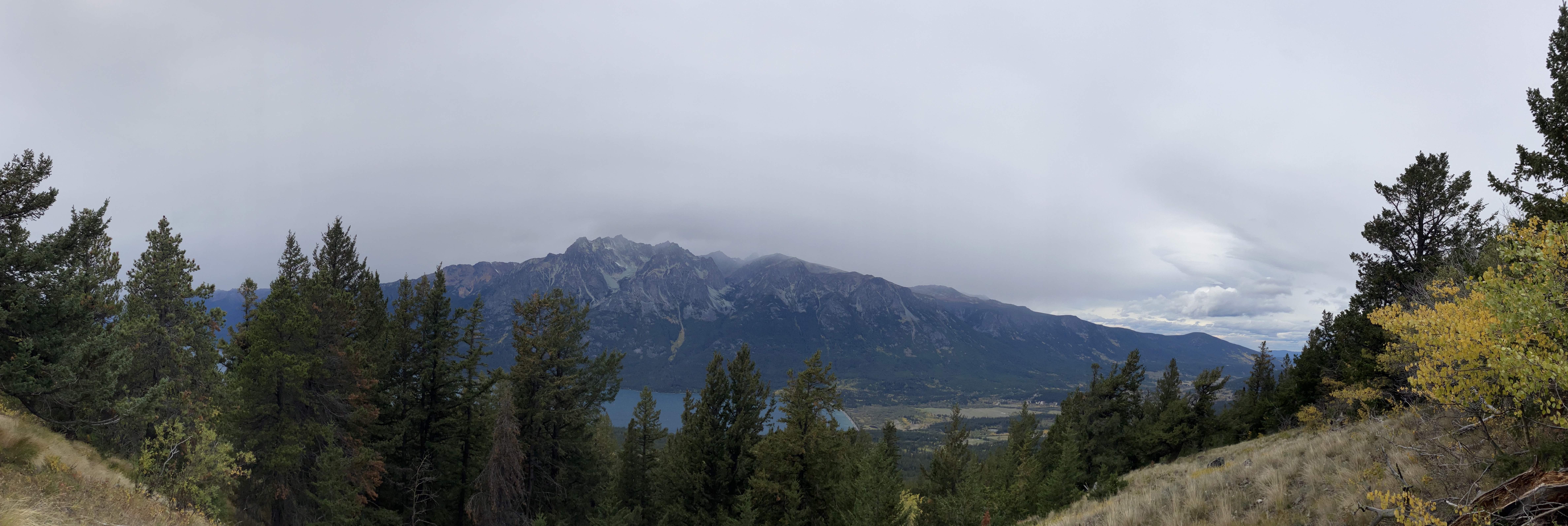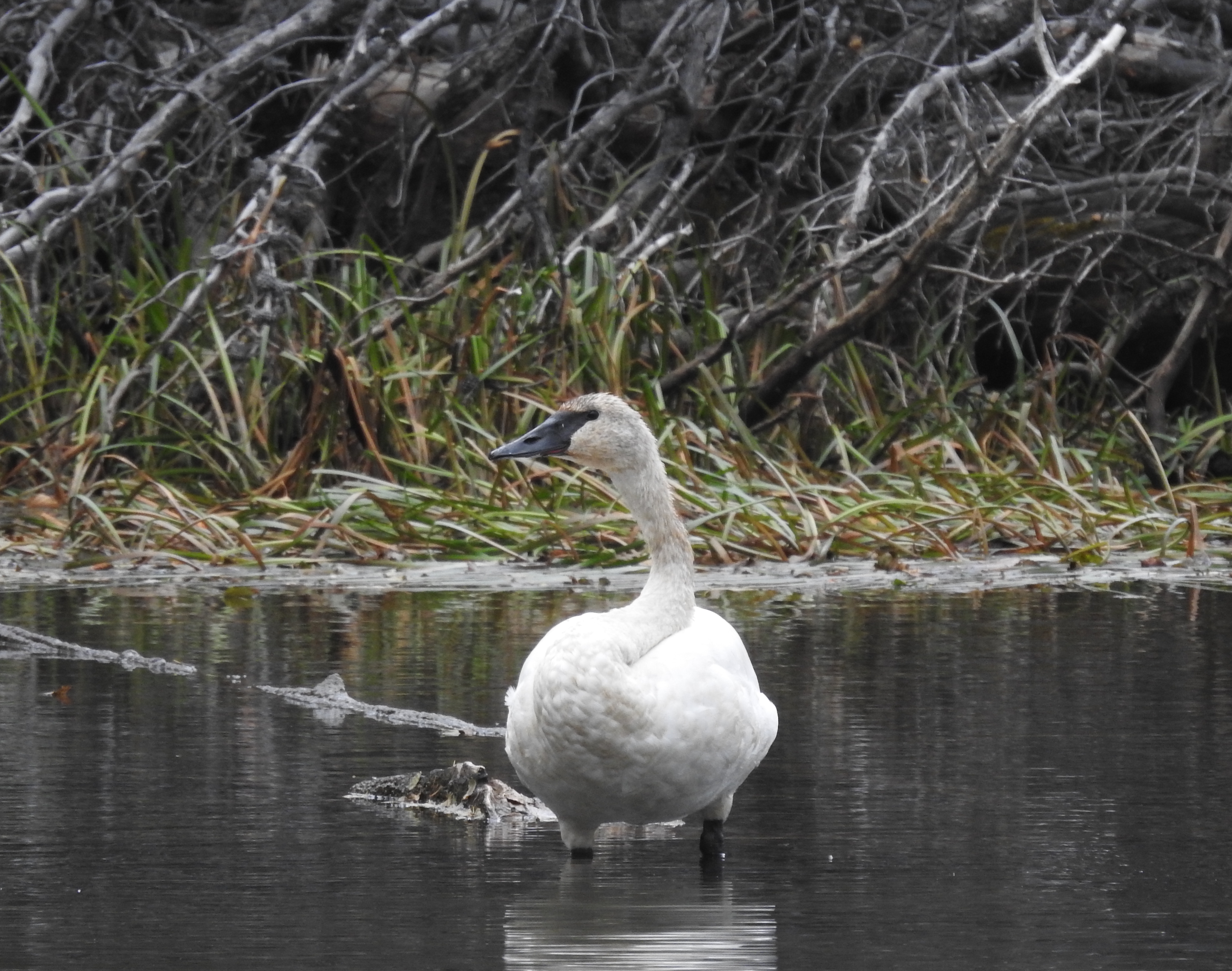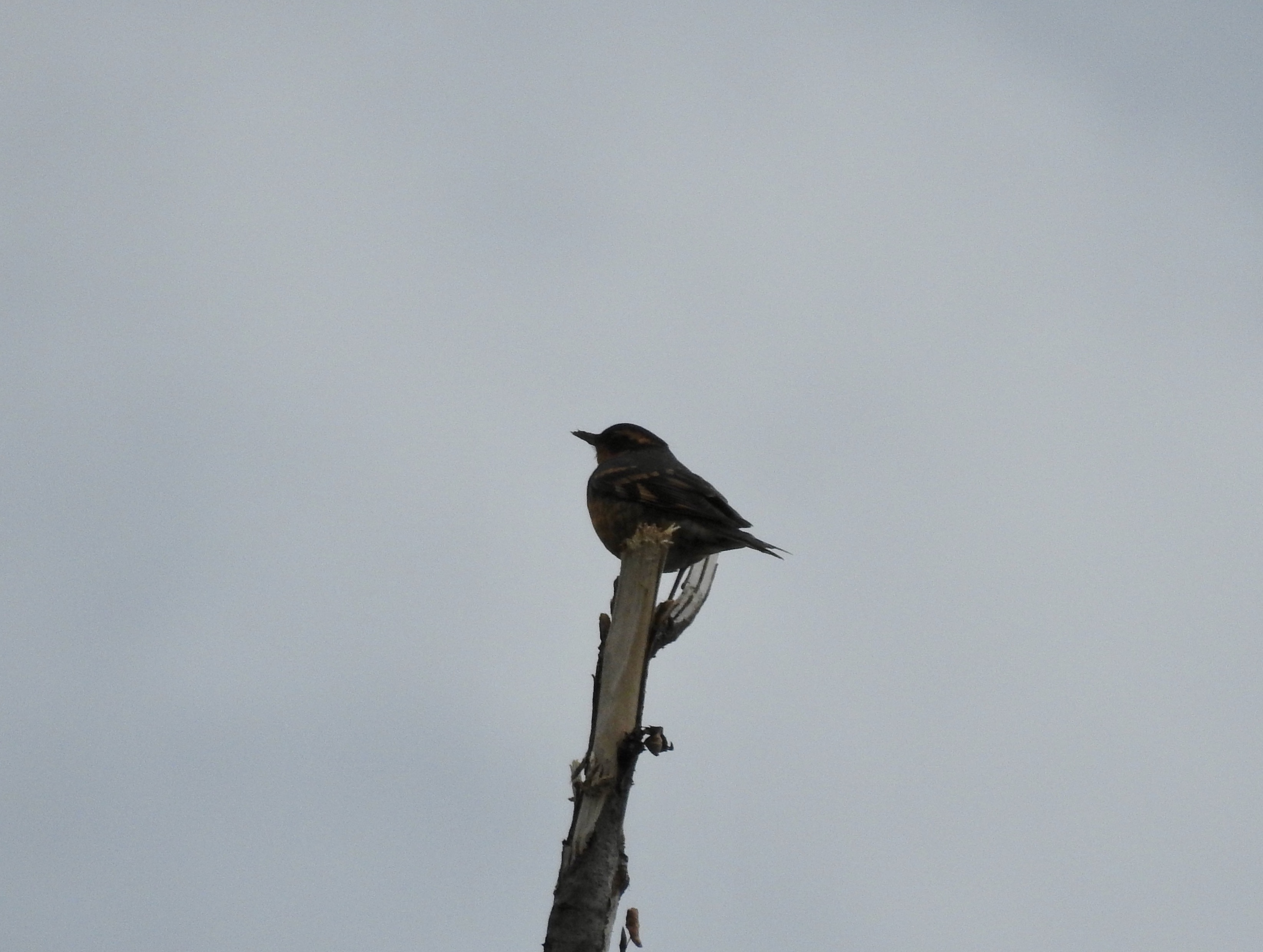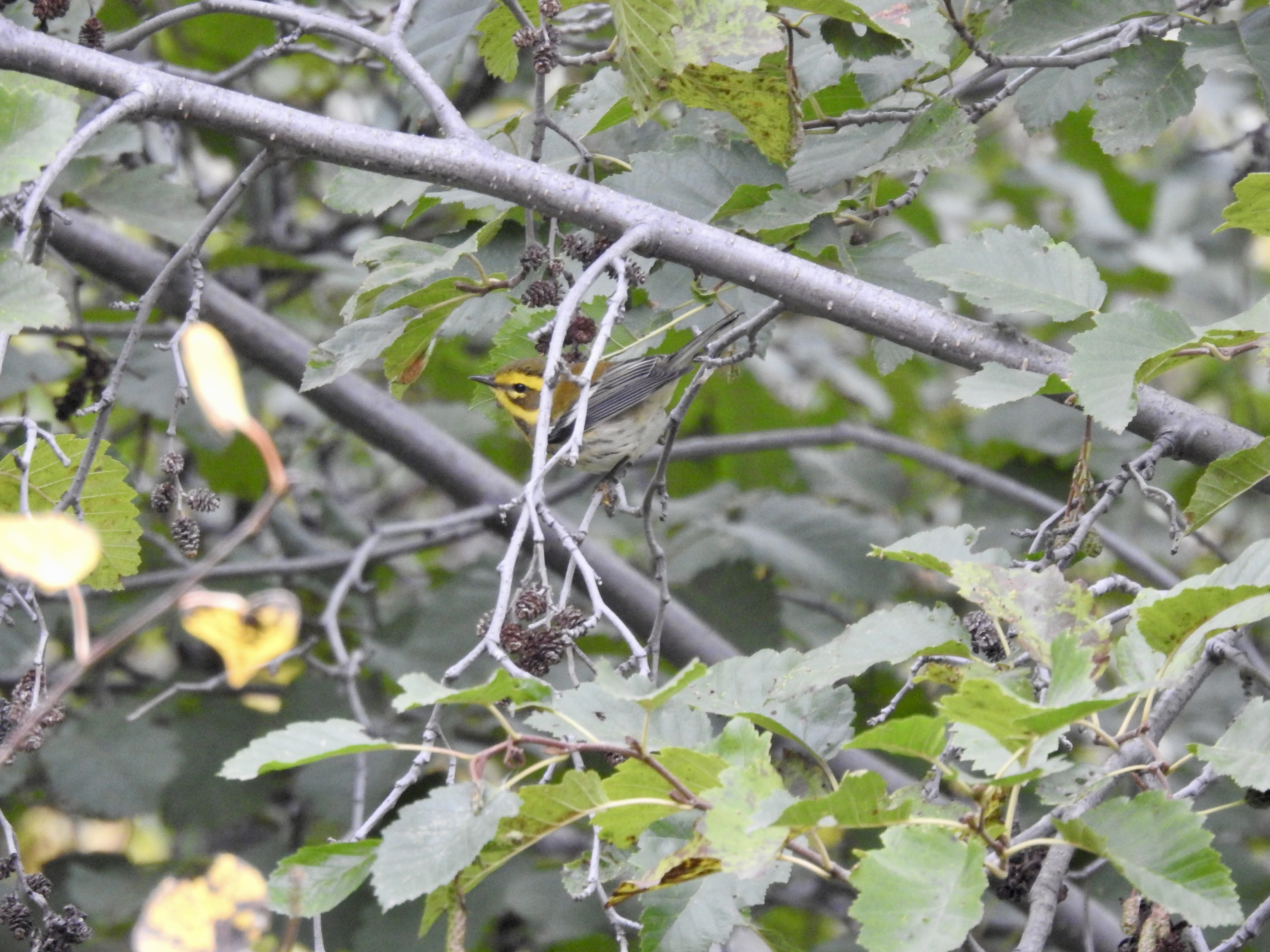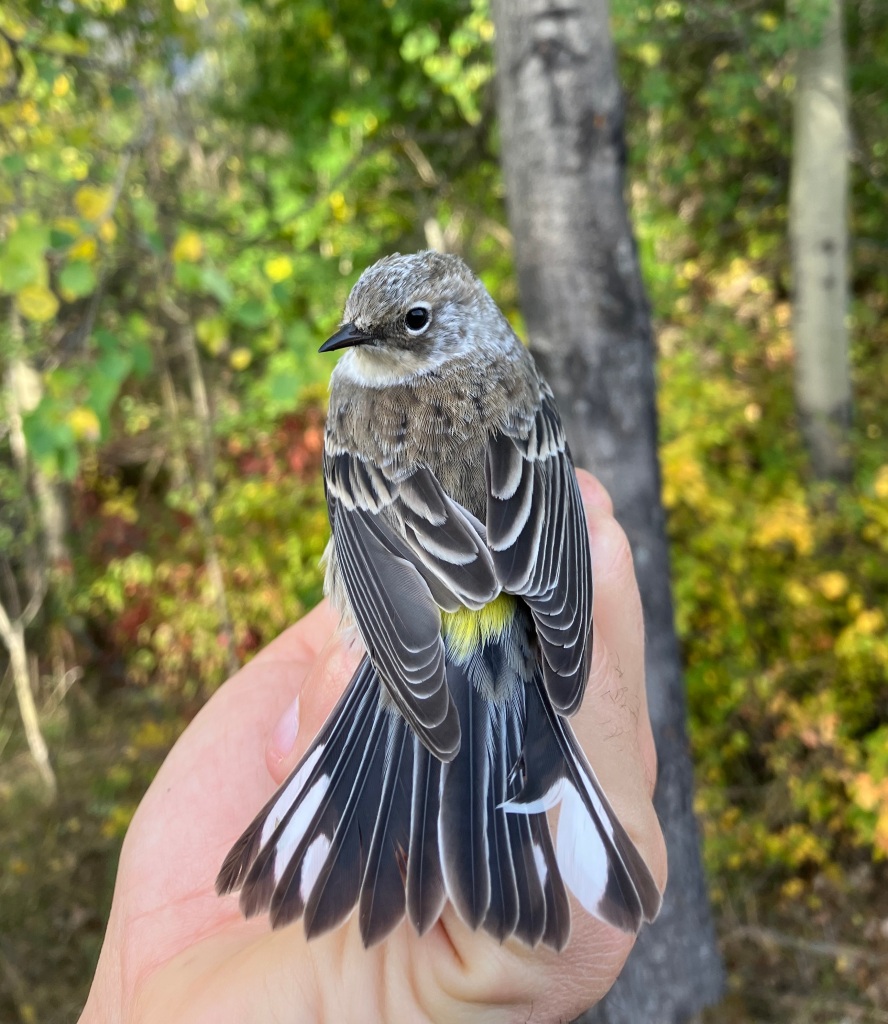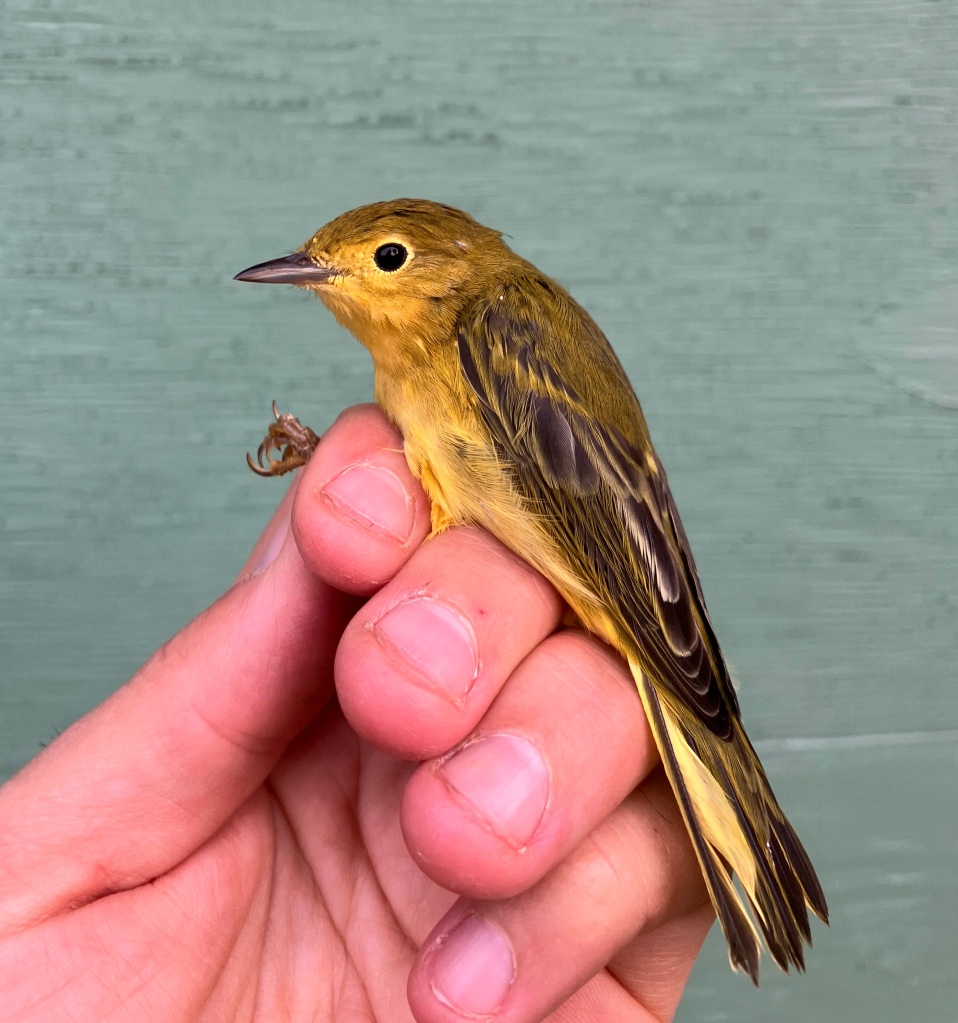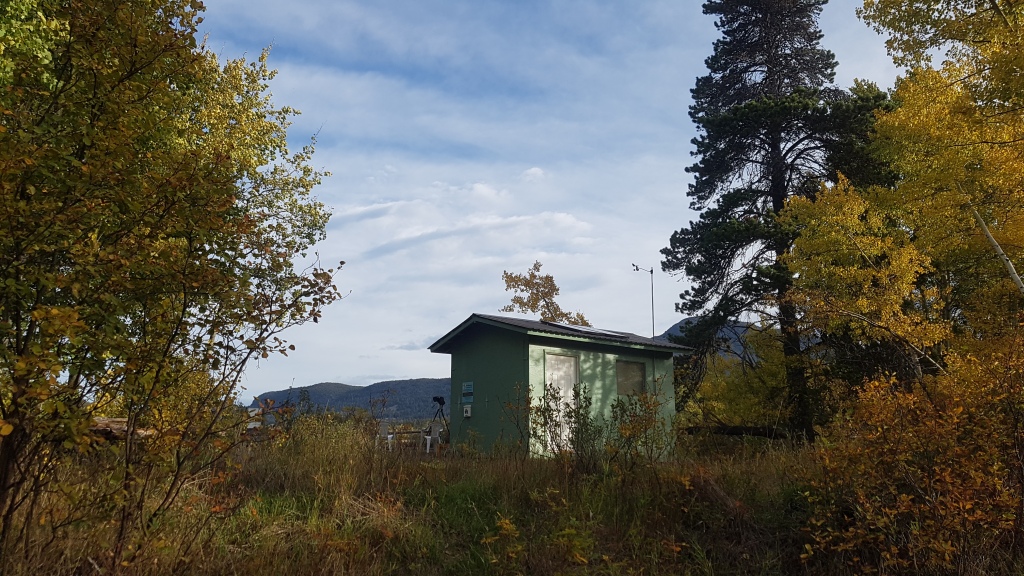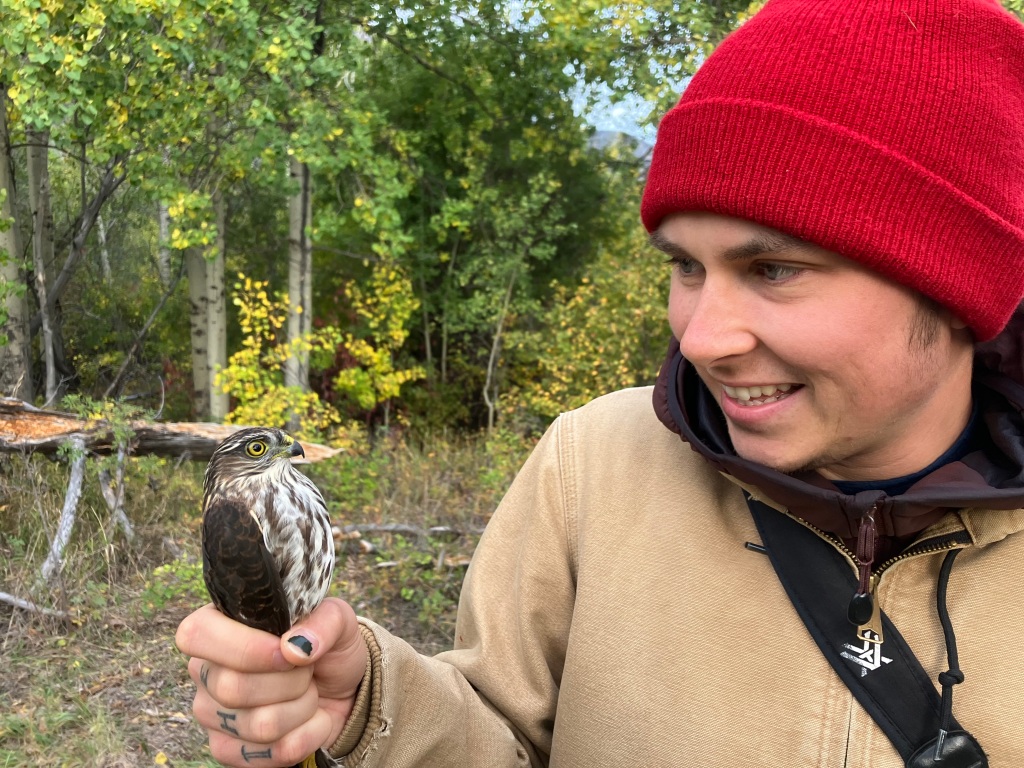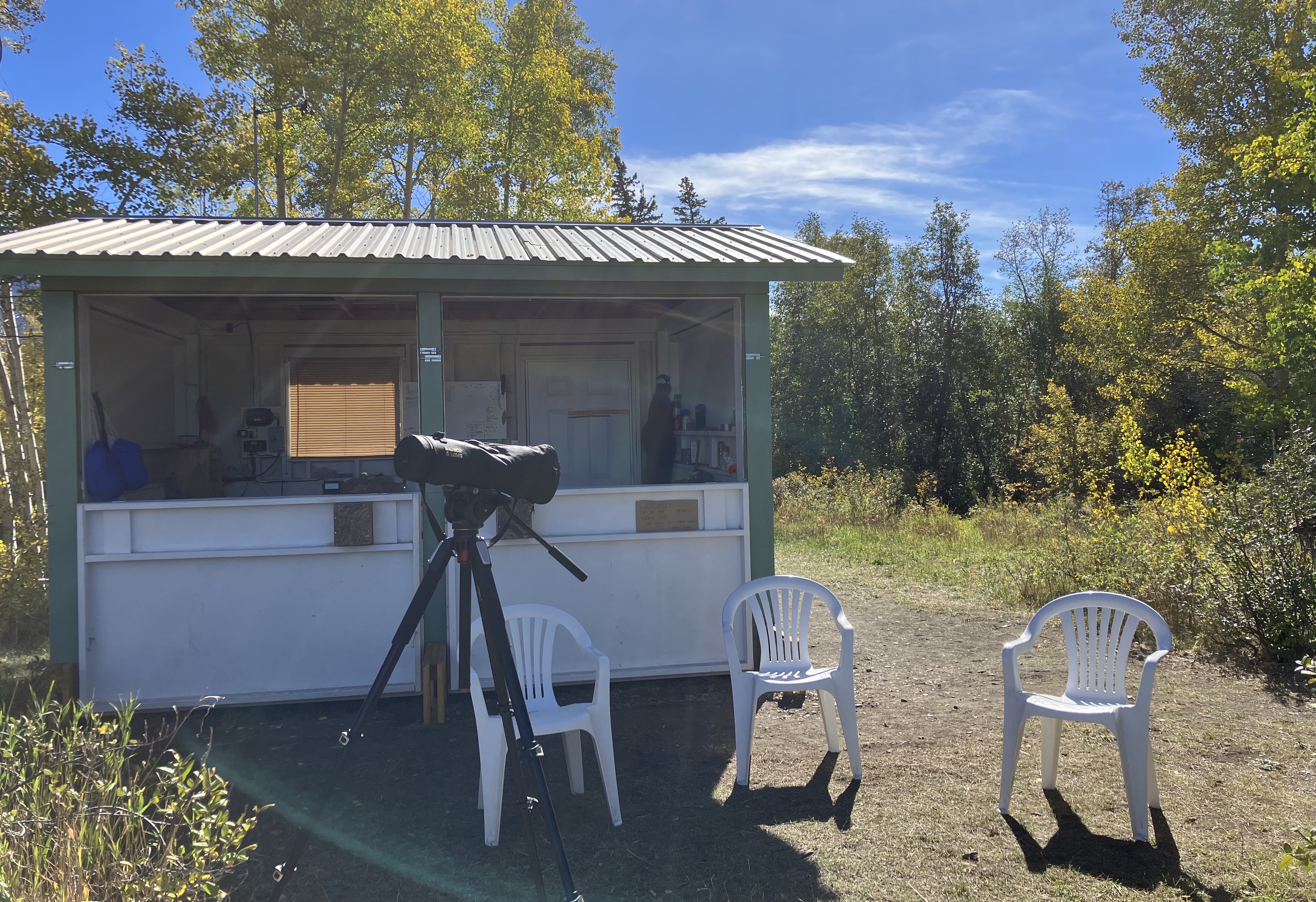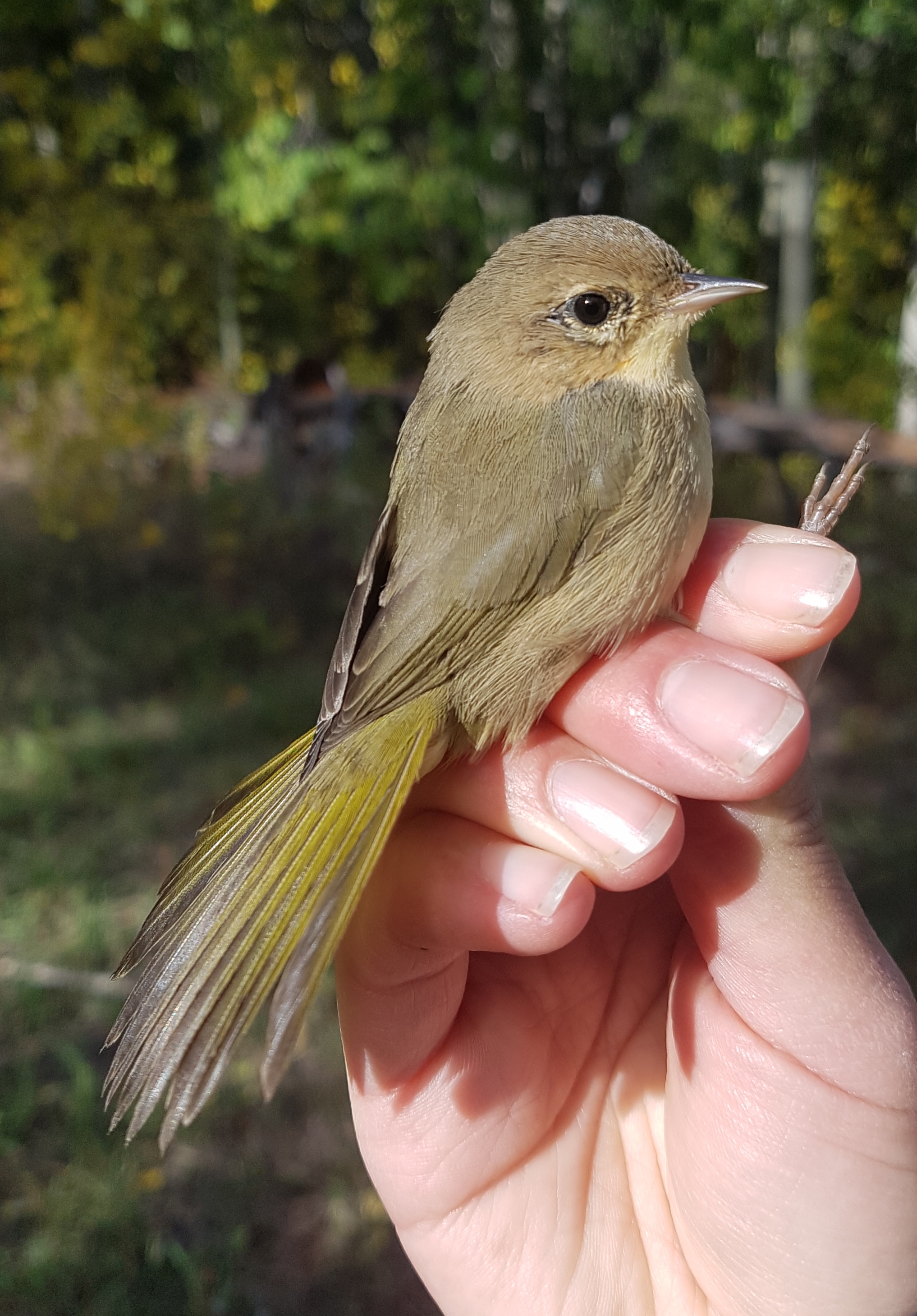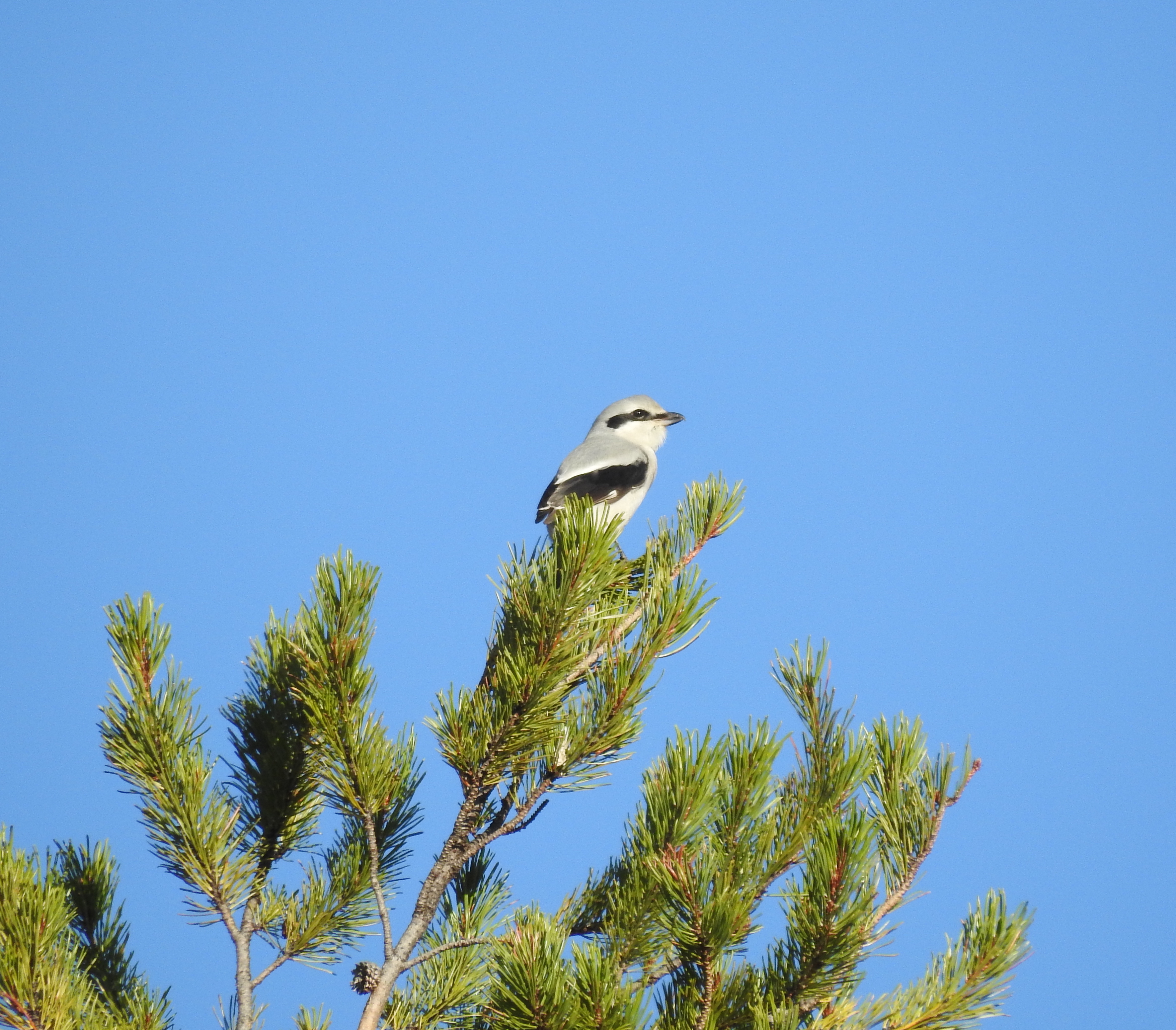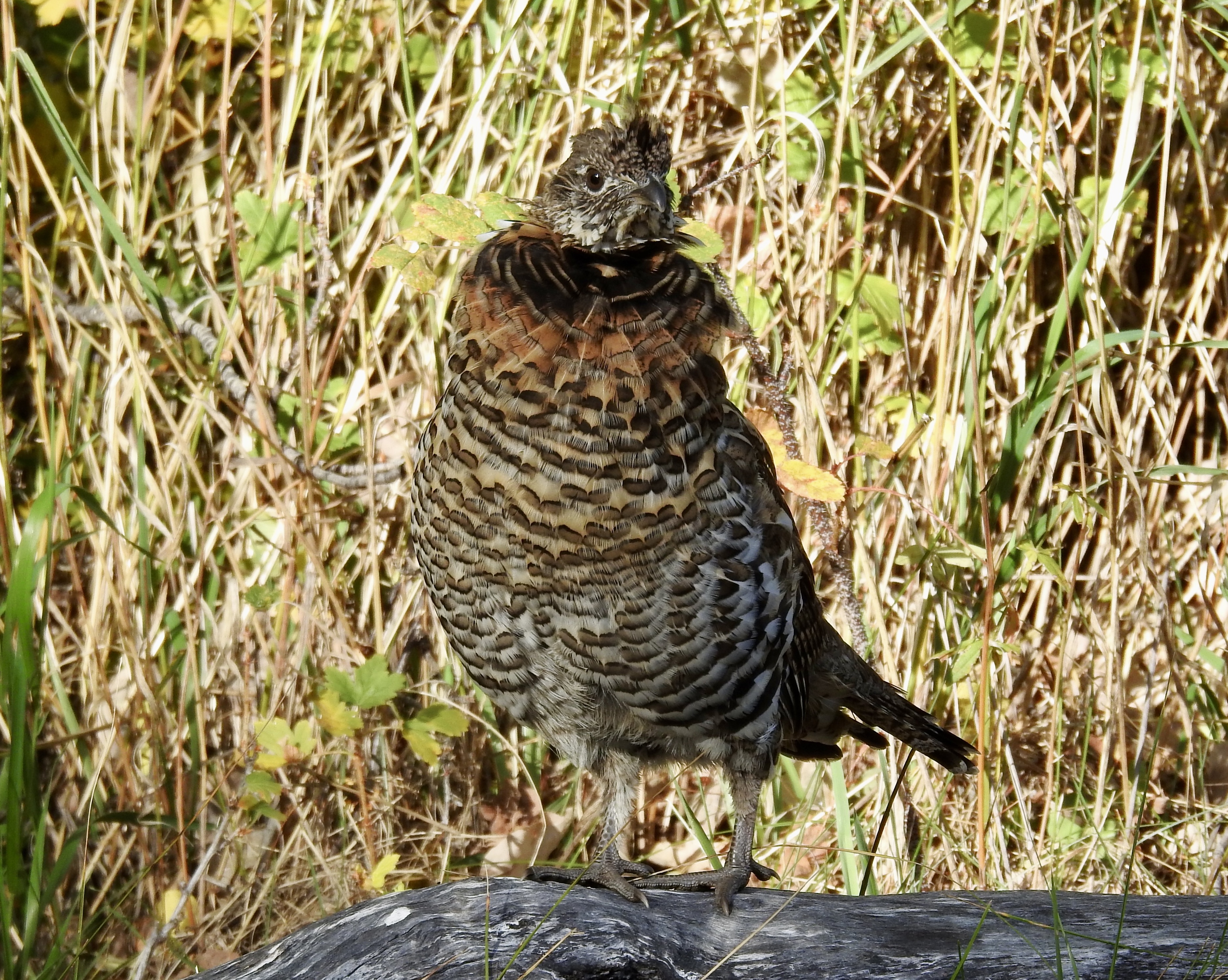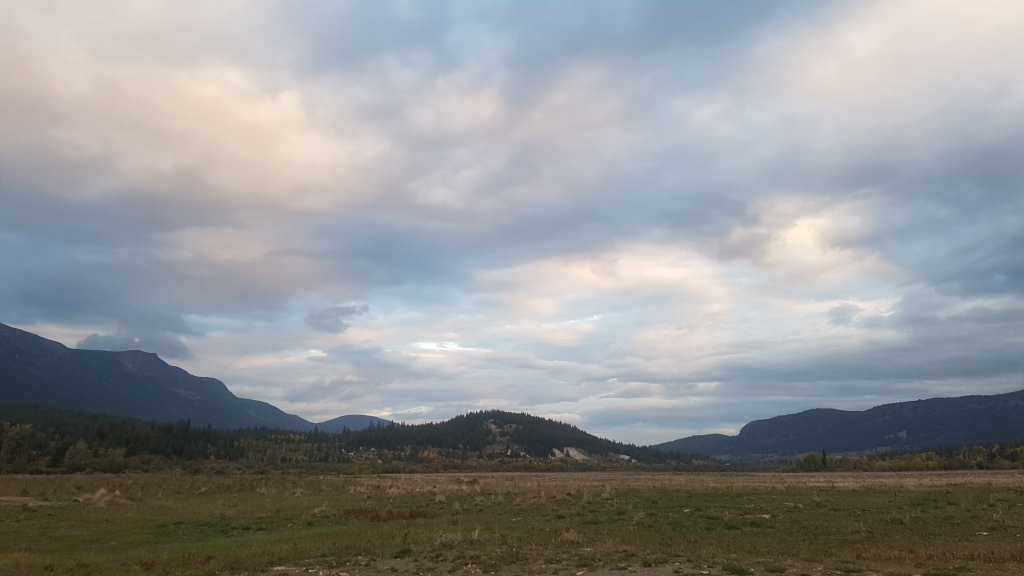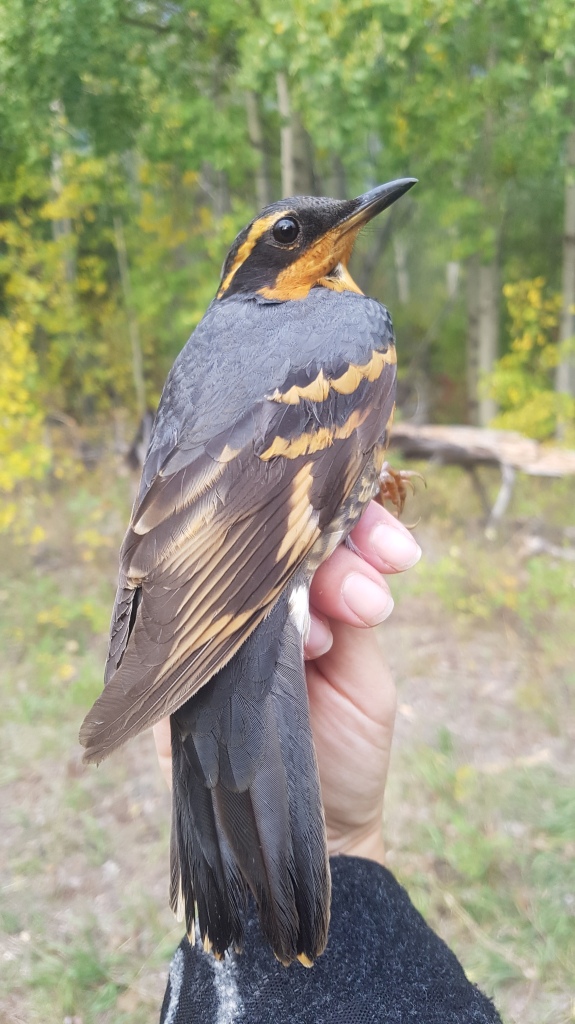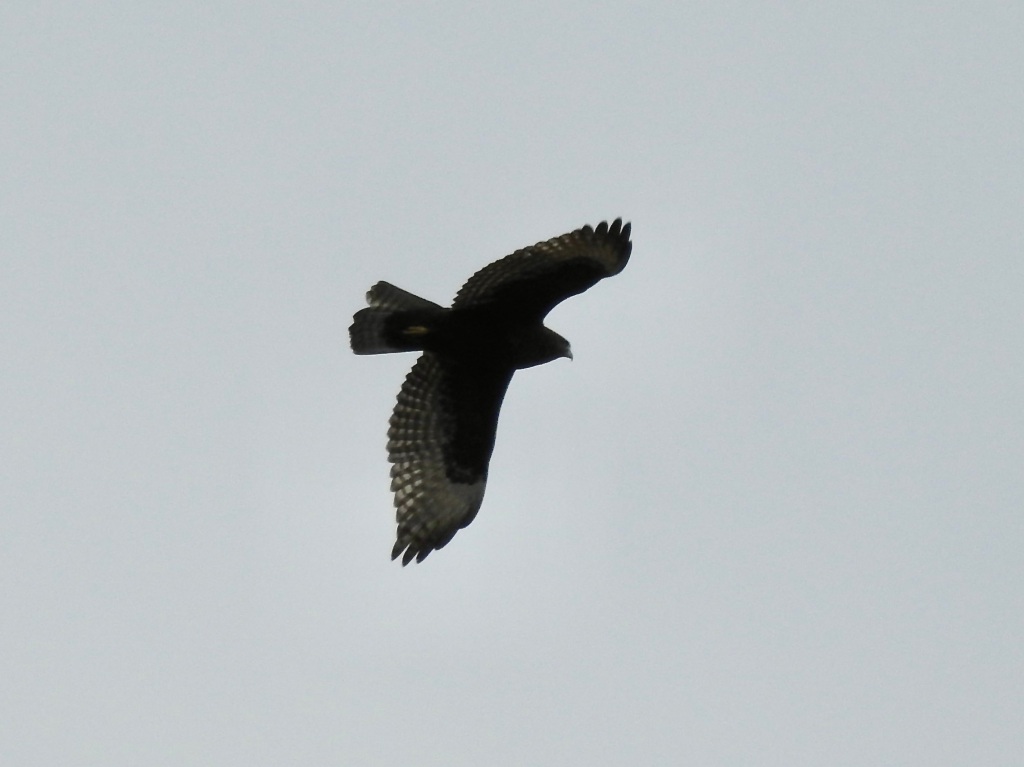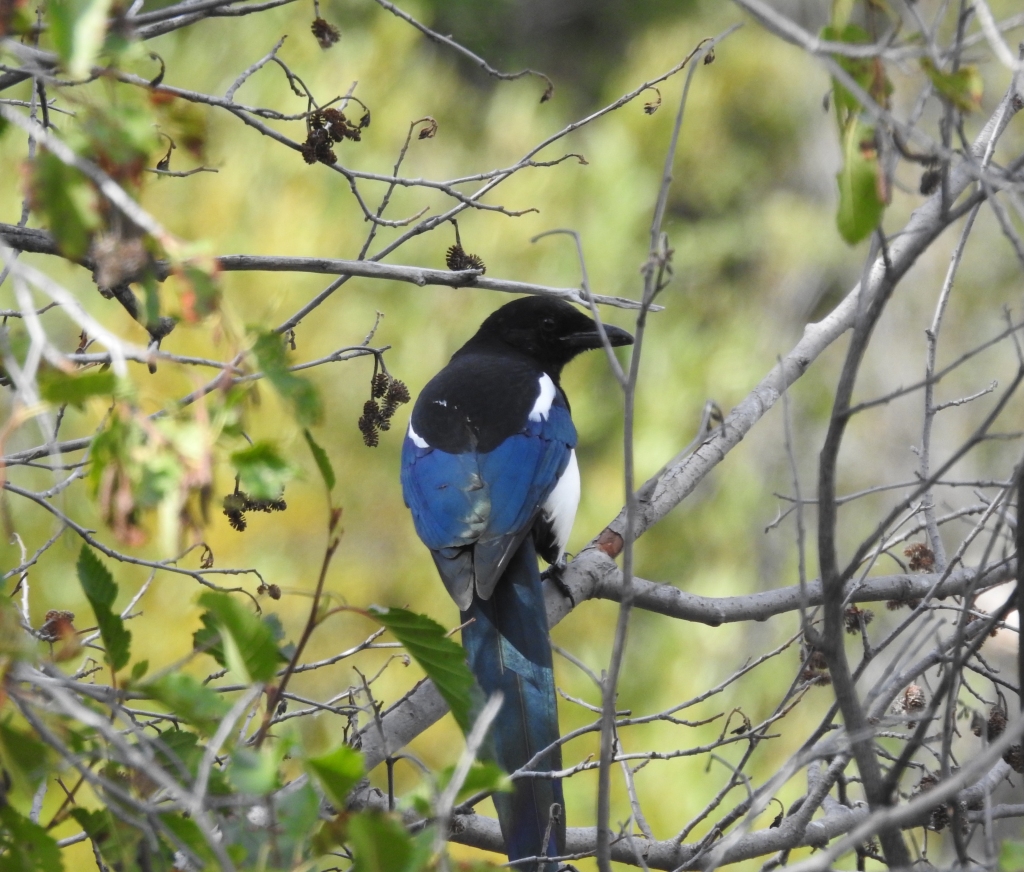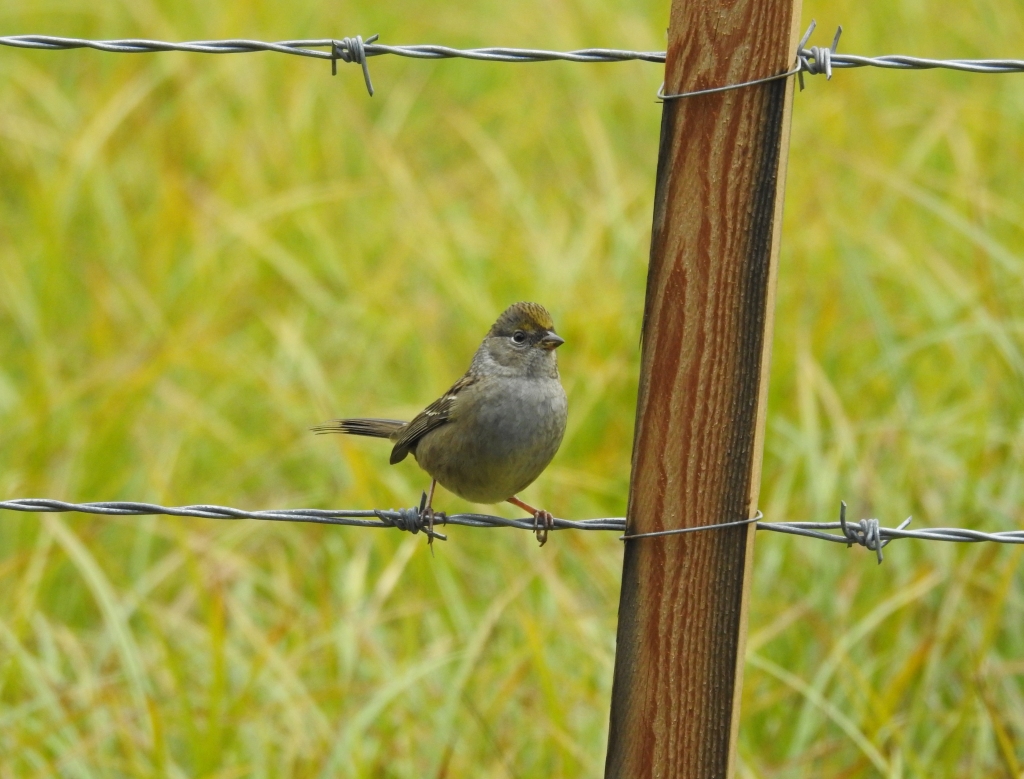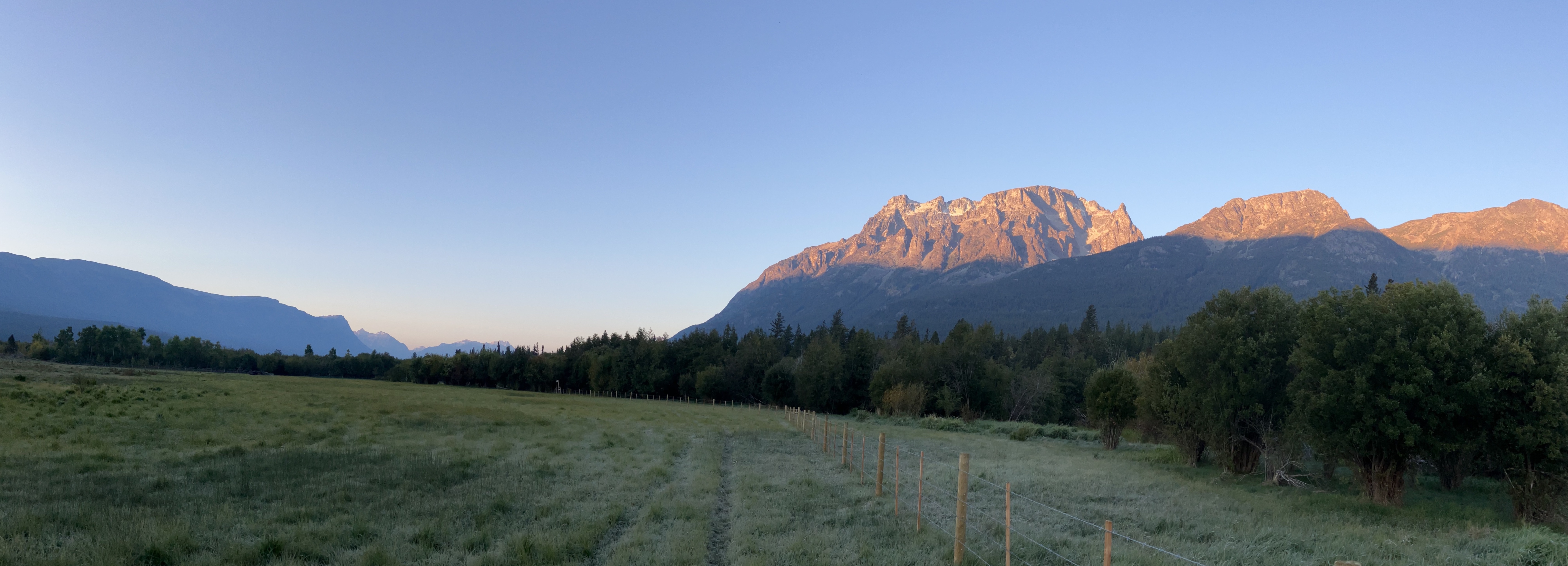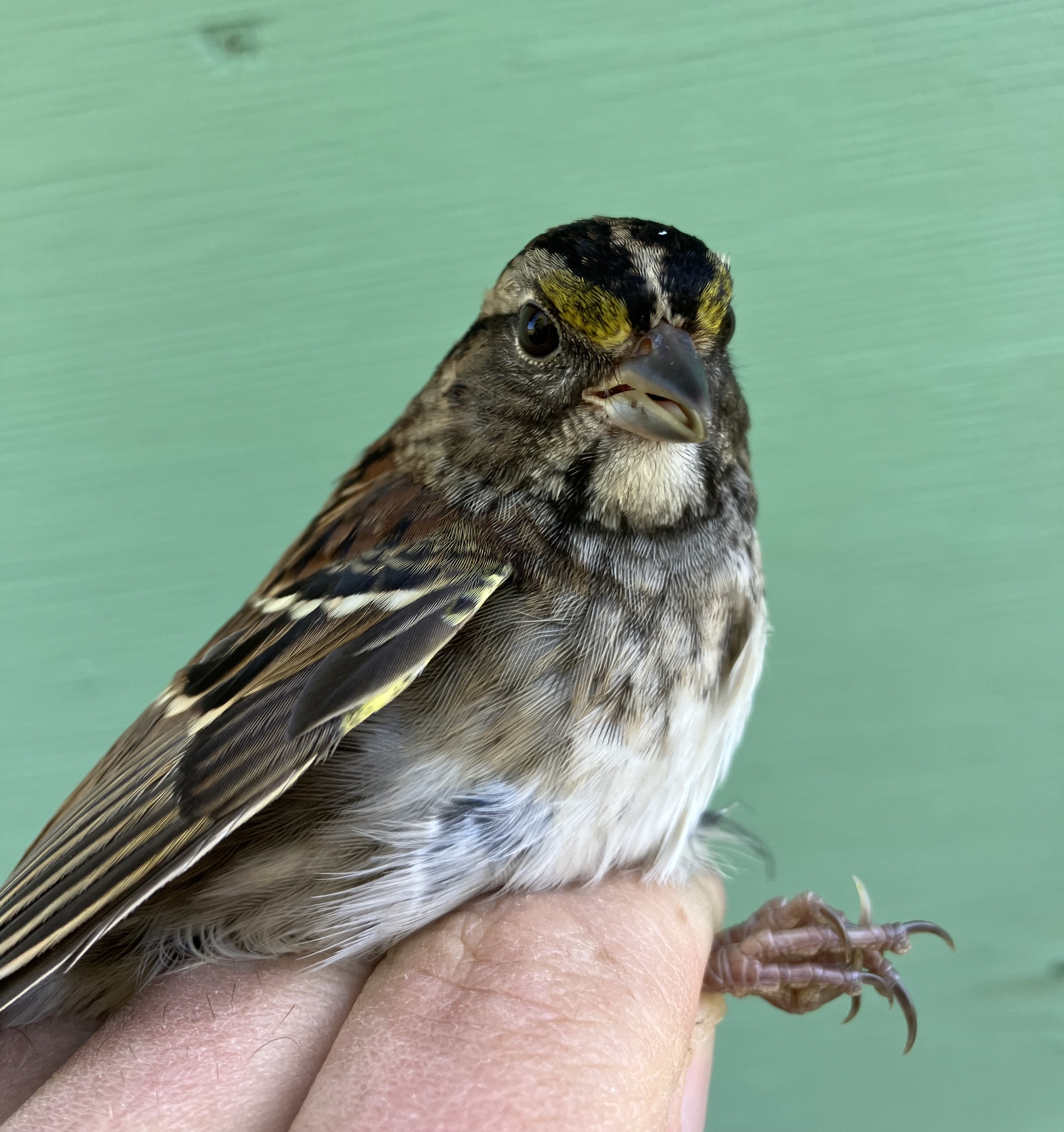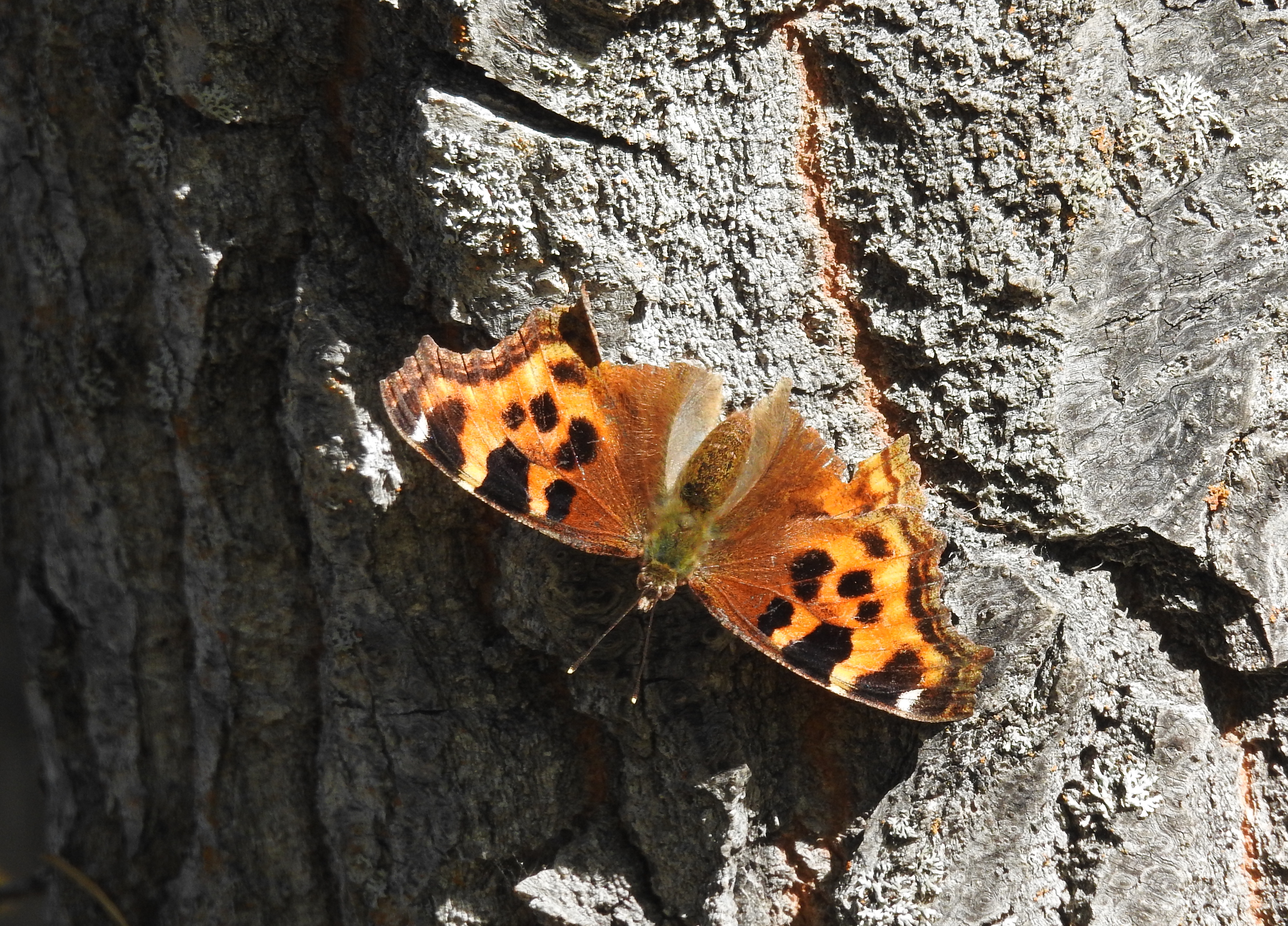After five nights of watching the wind hold its supreme sway over the valley, Jim Sims and I were able to head out for our eighth session of the 2023 owling season. It would be a successful affair as during the three-hour period we would band six new owls as well as recapturing two which we had first banded on September 20th. The sixth and final owl of the night (pictured above and on the right) was a bit of a big deal for it marked our 63rd individual banded of this season which breaks the previous regular season record of 62 set back in 2019! For those data enthusiasts out there this season we are averaging eight owls per night which is well above our long-term average (2012-22) of three. With three more nights left in September we are hopeful that we will be able to get out at least twice more to further build on what has turned out to be an outstanding breeding season for Northern Saw-whet Owls.
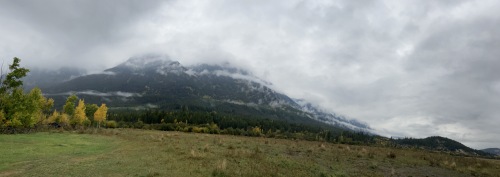
After such an exciting day yesterday, we awoke with hope of applying yet more bands to many beautiful songbirds. Alas, the weather had it in for us for we would battle bouts of drizzle and rain which hampered netting leaving us with only a handsome hatch-year male Varied Thrush, our fifth of the season, as a reward for our efforts.
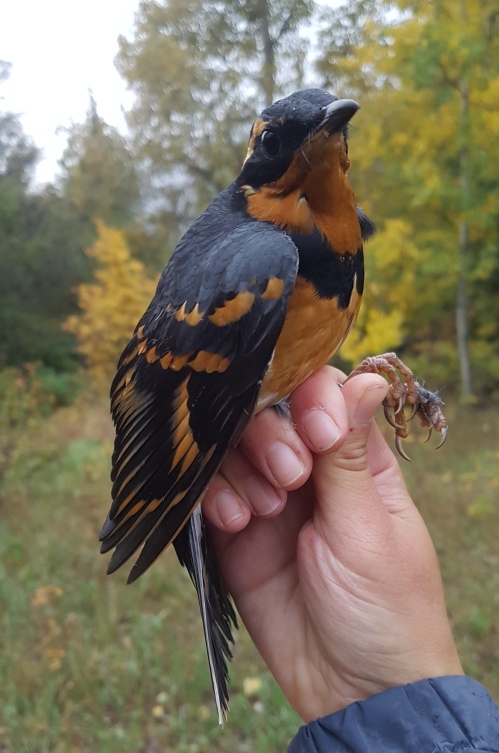
Good things come to those who wait: Varied Thrush
As can often be the case with poor weather days lots of birds were on the move. Yellow-rumped Warblers enjoyed their highest count of the season with 630 detected over the four hours. Roughly 60% of these were of the Myrtle subspecies whilst Audubon’s comprised 20% with the final 20% comprised of butterbutts that we were unable to identify to subspecies. The other species out in force was Oregon Dark-eyed Juncos with a season high of 200. The highlight of the day came on two separate occasions with the first as I was crossing a rather silent south field on census. Two birds flushed ahead of me uttering “tew-tew-tew” calls followed by a metallic “rattle” announcing themselves as our third and fourth detection of the oft overlooked but beautiful species Lapland Longspur. Later on, as I entered data to the accompaniment of the pouring rain on our metal roof both Sachi’s ears perked up to yet another series of calls from the third Lapland Longspur of the morning and fifth detection of the season as it flew out over the north field.
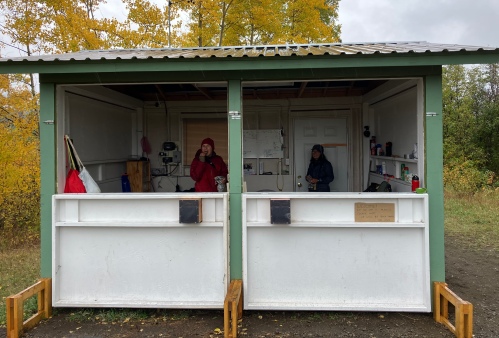
Sachi and Gabe making the best of the miserable weather
To see our eBird checklist for today, please visit: https://ebird.org/checklist/S150947755
_
| Species |
Band |
Recap |
| Varied Thrush |
1 |
0 |
_
| Daily |
|
Season |
|
| Birds Banded |
1 |
Total Banded |
898 |
| Species Banded |
1 |
Standard Banded |
881 |
| Birds Recapped |
0 |
Species Banded |
53 |
| Species Recapped |
0 |
Total Recapped |
165 |
| Species on Census |
30 |
Species Recapped |
17 |
| Species Recorded |
37 |
Species Recorded |
143 |
_
2023 Season Summary
It is yet again my pleasure to relay to you a somewhat abbreviated overview of the TLBO’s 17th season of migration monitoring. This is my second season at the reins and much to our collective joy Sachi (Sachiko) elected to join yours truly for a second season at the TLBO. Avery Bartels was again our program manager and thus the wizard behind the scenes. Lastly, the TLBO continues to be successfully run by the TFSS which has secured the program’s success and survival into the future.
Banding
After a stellar first two weeks to the season our banding numbers began to drop and by the month’s end our total of 657 birds banded was the fourth lowest on record ahead of 2020 (588), 2017 (534), and 2022 (511). Much to our dismay September would not be an improvement as we would go on to break 2022’s record low of 374 with 224 new birds banded. This is significantly lower than the 16-season average of 753 birds banded over the course of the month. Numbers however can be misleading without context as during the month of September we would only achieve 56% of our netting effort compared to 83% in August. This is due to poor weather which came in the form of eight sub-zero starts, which delayed us in opening our nets, paired with a month full of unpredictable strong winds which forced us to close down our nets early on many occasions. Needless to say, it is a prerequisite to have your nets open in order to capture and band birds and in a valley that can already be marginal at the best of times with respect to weather this September was extra challenging. The season would end with 881 birds banded by standard means with a further 17 birds banded via our non-standard nets (Hawk nets, Pipit fence and extra passerine nets). This is the lowest total on record behind last season’s 885 birds banded if only by a thin margin.
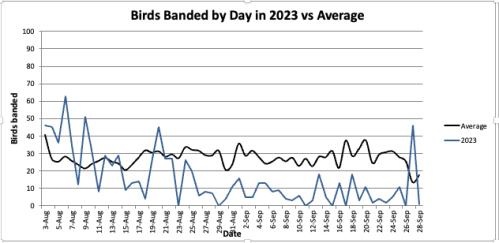
Figure 1. Birds banded per day versus the 16 season average
Looking at species totals from our banding efforts paints a rather mixed picture. Swainson’s Thrush yet again dominated our banding chart, breaking the previous single season record of 253 (2018) with 255 banded. Lower elevation thrush species appeared to have done well overall, as we banded 25 American Robins which is over double their average of 12 and the third highest total. We never band Varied Thrush in numbers but our five banded this season tied the previous record set in 2017. Grassland breeders, namely Chipping and Vesper Sparrow set new single season records with 52 and 14 banded respectively, which is astronomically higher than their long-term average of four apiece. Four species had their second lowest seasons on record: American Redstart (29), Common Yellowthroat (39), Warbling Vireo (55), and Song Sparrow (62). Orange-crowned Warbler (15), Wilson’s Warbler (19), Yellow Warbler (23) and Lincoln’s Sparrow (31) set new all-time lows for numbers banded. Lincoln’s Sparrow and Common Yellowthroat share a preference for wet meadows and grassy and or shrubby areas for breeding and have seen a stark decline in our banding and daily estimated totals since 2020. Though these numbers may seem dire it is important to remember that this year the entire province of British Columbia has been experiencing a massive drought whilst last season there was a very prolonged cool wet spring and summer. It would appear that both of these weather regimes were not ideal conditions for many of the species with lower totals mentioned above. Further, all species do experience annual fluctuations which are the result of food availability and conditions in their preferred breeding habitat, so the best that we can do is wait and see what next season brings.
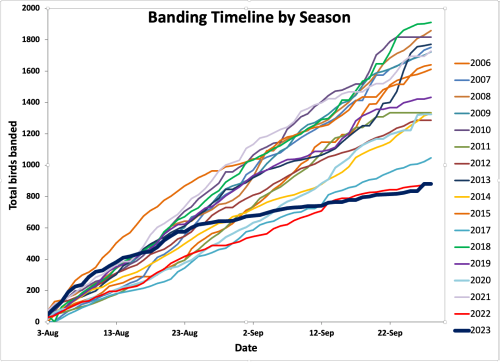
Figure 2. Banding Timeline by Season
Every season has banding highlights with the top being the TLBO’s first banding of our station’s emblem bird, a Clark’s Nutcracker! We would add a second species to the station’s banding list with our first banding record of a European Starling. Other highlights included two Steller’s Jays, two Belted Kingfishers, two American Pipits (including our first captured by standard means), a Brown-headed Cowbird, Wilson’s Snipe, Nashville Warbler and our first Lazuli Bunting since 2020.
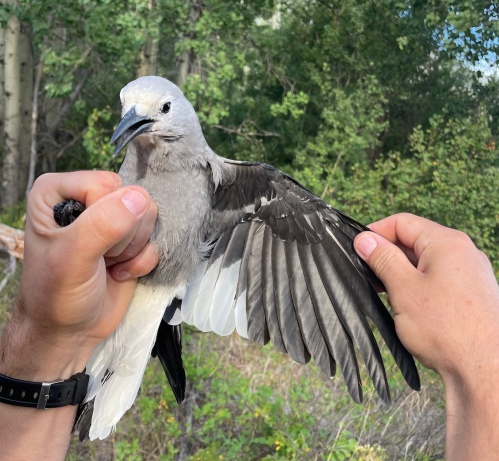
A rare glimpse of the underwing of a Clark’s Nutcracker
Of the 165 birds that we recaptured this season some had some interesting stories to tell. Of these we had a Swainson’s Thrush, Song Sparrow and Yellow Warbler who were all first banded in 2019 and are each at least six years old. Next a Black-capped Chickadee (2018) and two Swainson’s Thrush (2018 and 2019) who are all seven years old at minimum. Finally, the oldest inter-annual bird that we recaptured was a Swainson’s Thrush who we first banded in 2017, which makes this bird at least eight years old!
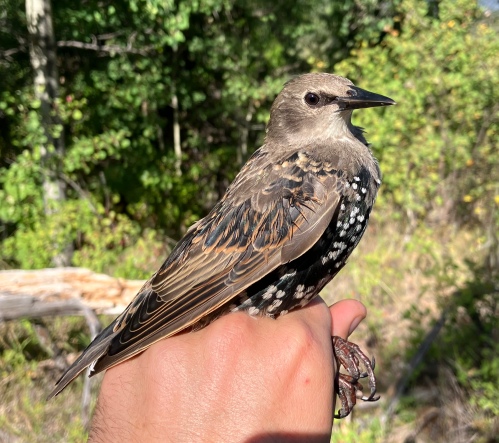
The TLBO’s first banding of a European Starling
Observations and Estimated Totals
Now to shift gears to the side of our monitoring that doesn’t often receive as much attention as it should. A vastly reduced netting effort gave us more time to devote to observations as we would log a total of 17,205 detections of individual birds during the course of the month of September which is a significant increase on August’s total of 10,787 for a season total of 27,992! This is the second highest total both for the month of September and for the season, behind 2020 which ended with 28,196 detections. As is often the case this was helped by nearly record numbers of Yellow-rumped Warblers with 6,453 which is second to, you guessed it, 2020’s total of 7,538. This season also has the distinguished pleasure of tying 2021 for the second highest species count at 143 behind 2019’s record 149.
Table 1. Top 10 species detected in 2023 versus the 16 season average
| Species |
DET |
Avg 06-22 |
| Yellow-rumped Warbler |
6453 |
3284 |
| American Crow |
3292 |
1199 |
| American Pipit |
1388 |
535 |
| Oregon Junco |
1161 |
416 |
| American Robin |
945 |
726 |
| Ruby-crowned Kinglet |
922 |
819 |
| White-crowned Sparrow |
901 |
243 |
| Song Sparrow |
726 |
807 |
| Savannah Sparrow |
716 |
490 |
| Chipping Sparrow |
698 |
355 |
As keen birders we arrive each August with the hope of adding new species to the station’s list. We would add three new species in 2023 all of which came as surprises albeit in different fashions. On the opening day I observed the TLBO’s first ever Trumpeter Swan in the lagoon. We later learned that this bird had arrived with a possible mate in the spring and never left as we would encounter the Swan on every day of the season. As to what happened to the possible mate, some things are best left a mystery. The next addition came on the 31st of August while on census I was visited by the Cariboo’s second and the TLBO’s first record of a Pygmy Nuthatch! The third and final addition came on September 23rd when three Black-billed Magpies were sighted in the north field as they were chased by a Merlin while foraging amidst a murder of American Crows.
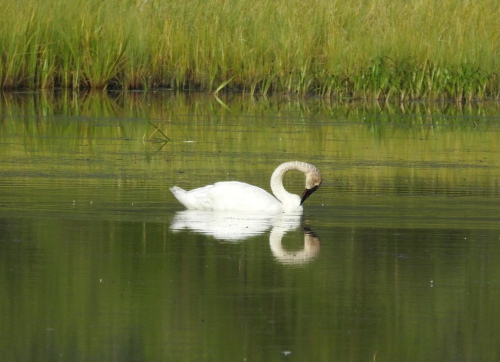
Our dependable Trumpeter Swan
Other highlights included our second records of Baird’s Sandpiper, Say’s Phoebe, Black-headed Grosbeak and Prairie Falcon (detected thrice this season). We also would add to our record of Lesser Yellowlegs, as well as many species for which we have less than 20 records: namely, Northern Shrike, Eastern Kingbird, Blackpoll Warbler, Lapland Longspur, Magnolia Warbler, Red-necked Phalarope, Yellow-head Blackbird, and Black-backed Woodpecker.
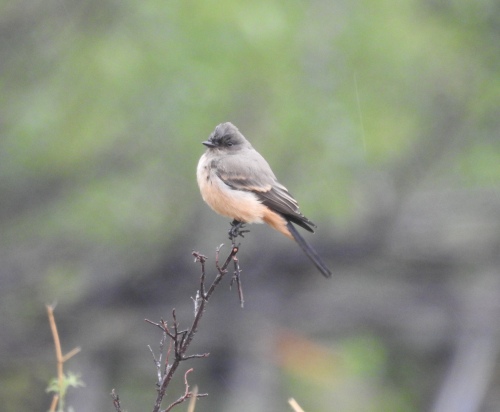
The TLBO’s second Say’s Phoebe
Other Projects and Collaborations
We are excited to again be collecting tail feather samples for the project led jointly by Birds Canada and the Canadian Wildlife Service which is investigating nutrients and contaminants of aerial insectivore and boreal breeding species.
A second project that we will be collecting samples for this season is led by Dr. Laura Grieneisen from UBCO which is investigating the microbiome of Northern Saw-whet Owls.
Conclusion and Recognitions
That is the abbreviated version of the overview of the TLBO’s 17th season of migration monitoring at our site in the majestic Tatlayoko Valley. A much more in depth and all-encompassing perspective in the form of the final report will be made available by early November under the “Migratory Bird Count” page of this site. Our owl banding season will continue to run until October 15th, weather permitting, so stay tuned for periodic updates here as the season progresses.
The TLBO has the good fortune to be run by the Tatlayoko Field Station Society and operates on the property owned by the Nature Conservancy of Canada and I would like to extend our deepest gratitude to both organizations. Avery Bartels continues to fill the role of the station manager and we would like acknowledge the countless hours that he spends behind the scenes to ensure that each season runs successfully.
The TLBO is funded by Canadian Wildlife Service, BC Gaming Grant, Otter Books, Avocet Tours, Jörg Fischer and Hannelore Ernst, Ruth and Charlie Travers, John Snively, and a variety of other private donors. We would like to extend our gratitude to everyone who has contributed this season. To find out more about how to donate to the TLBO, to arrange a visit to our owl banding session, or for any other questions please get in touch with us at tatlayokobirds@hotmail.com.
Being a small budget program, we are always open to accepting donations of all shapes and sizes and can guarantee that they will go to good use in the form of monitoring the populations of birds that move through the valley.
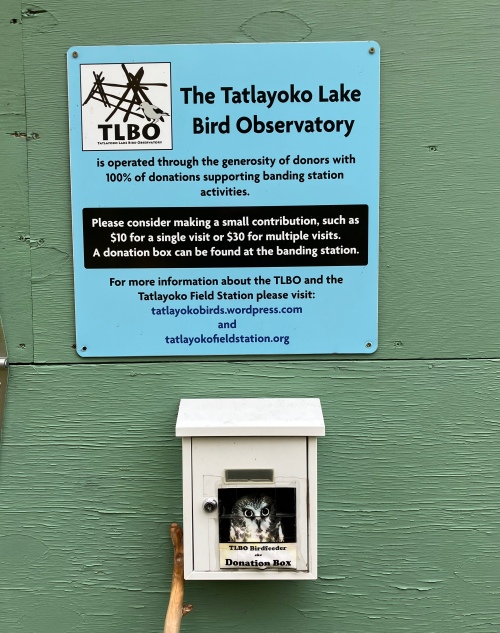
Thank you all for following along on our journey this season and we hope to meet you here again next August.
_
| Species |
Band |
Recap |
|
|
255 |
72 |
|
|
62 |
22 |
|
|
55 |
4 |
|
|
52 |
2 |
|
|
40 |
0 |
|
|
39 |
20 |
|
|
39 |
2 |
|
|
31 |
5 |
|
|
30 |
0 |
|
|
29 |
5 |
|
|
28 |
0 |
|
|
25 |
6 |
|
|
23 |
4 |
|
|
22 |
0 |
|
|
19 |
0 |
|
|
15 |
1 |
|
|
15 |
0 |
|
|
14 |
5 |
|
|
14 |
1 |
|
|
8 |
1 |
|
|
7 |
0 |
|
|
6 |
1 |
|
|
5 |
0 |
|
|
5 |
0 |
|
|
5 |
0 |
|
|
4 |
13 |
|
|
4 |
1 |
|
|
4 |
0 |
|
|
4 |
0 |
|
|
4 |
0 |
|
|
3 |
0 |
|
|
3 |
0 |
|
|
2 |
0 |
|
|
2 |
0 |
|
|
2 |
0 |
|
|
2 |
0 |
|
|
2 |
0 |
|
|
2 |
0 |
|
|
2 |
0 |
|
|
1 |
0 |
|
|
1 |
0 |
|
|
1 |
0 |
|
|
1 |
0 |
|
|
1 |
0 |
|
|
1 |
0 |
|
|
1 |
0 |
|
|
1 |
0 |
|
|
1 |
0 |
|
|
1 |
0 |
|
|
1 |
0 |
|
|
1 |
0 |
|
|
1 |
0 |
|
|
1 |
0 |
|
|
1 |
0 |
| Season |
|
| Total Banded |
898 |
| Standard Banded |
881 |
| Species Banded |
53 |
| Total Recapped |
165 |
| Species Recapped |
17 |
| Species Recorded |
143 |
| Total Detections |
27,992 |
Read Full Post »












